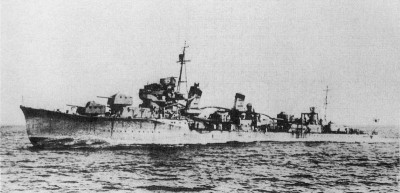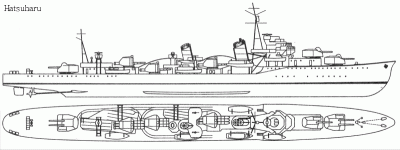| Název: Name: | Hacuharu | Hatsuharu class |
| Originální název: Original Name: | 初春型 / はつはるがた | |
| Kategorie: Category: | torpédoborec | Destroyer |
| Období výroby: Production Period: | 14.05.1931-30.03.1935 | |
| Přehled vyrobených plavidel: Summary of Built Boats: | Hacuharu Nenohi Wakaba Hacušimo Ariake Júgure | |
| Uživatelské státy: User states: | | |
| Poznámka: Note: | - | - |
| Zdroje: Sources: | http://military.sakura.ne.jp/ ; http://wikipedia.org/ | |
upravil : FiBe

